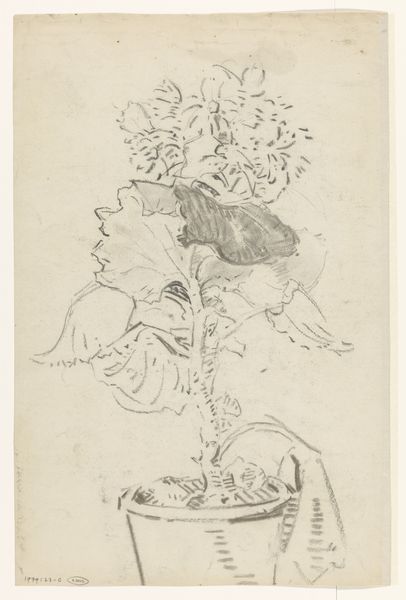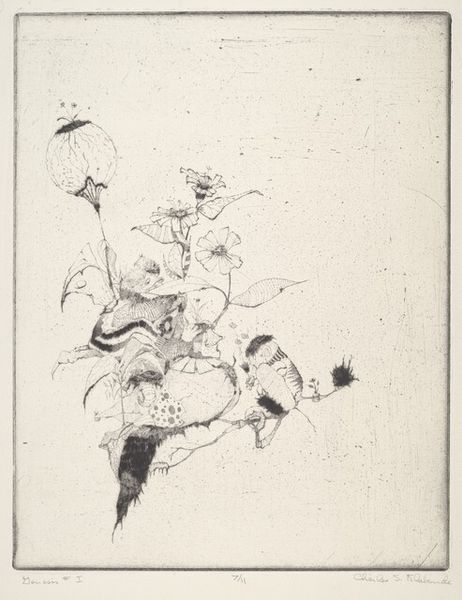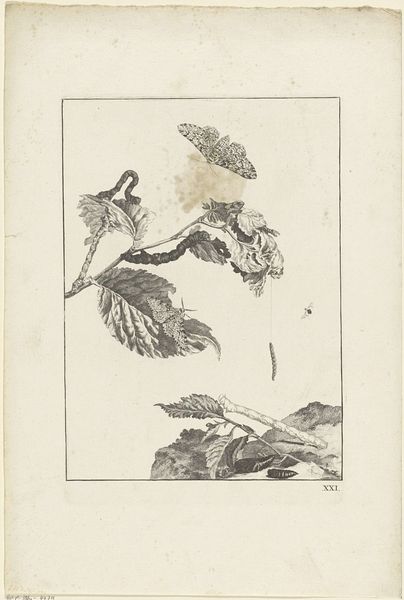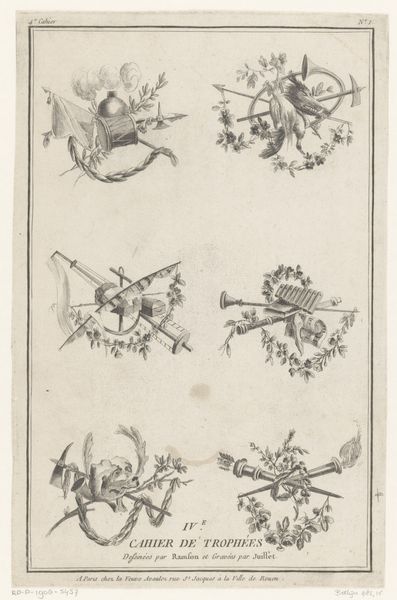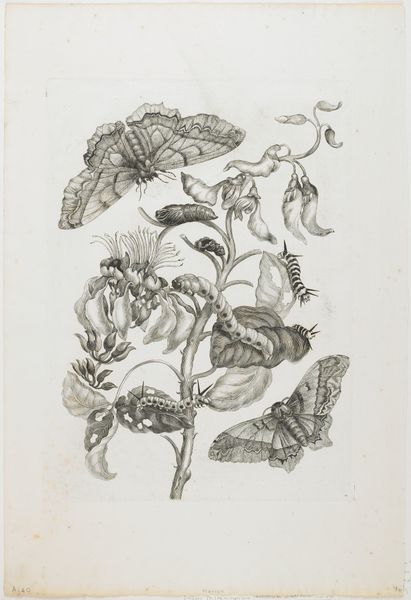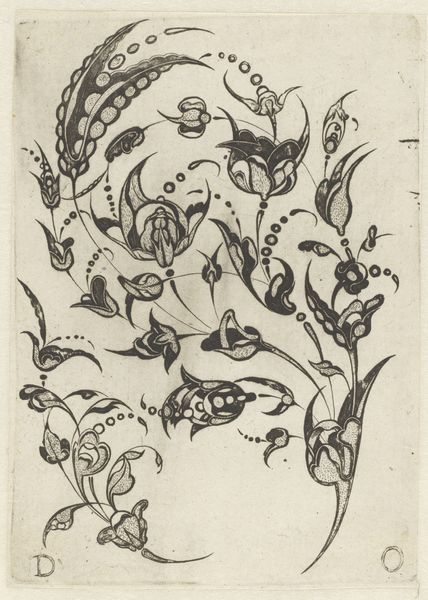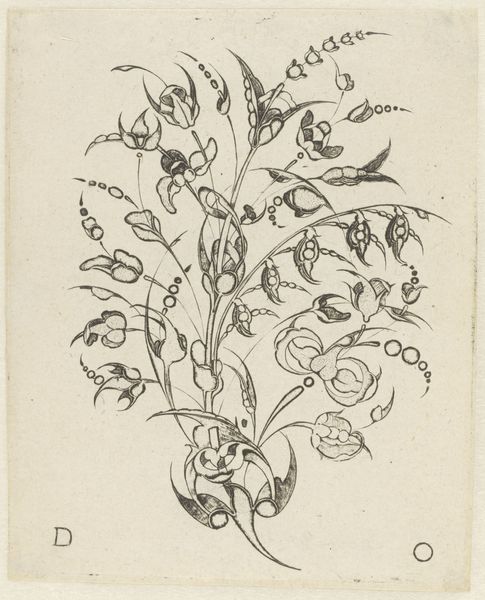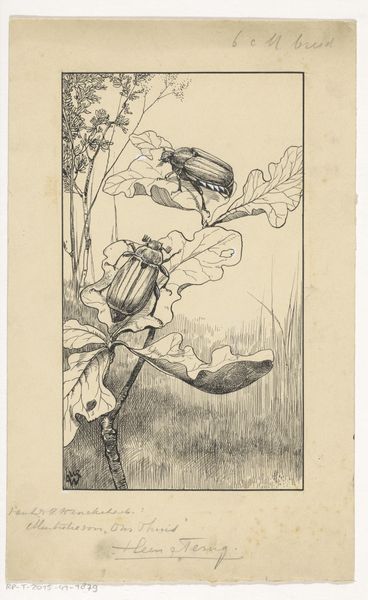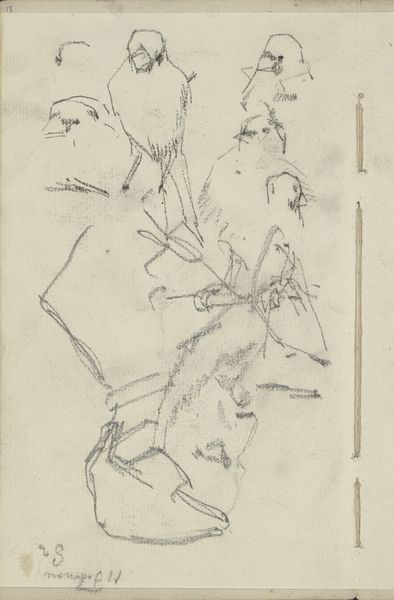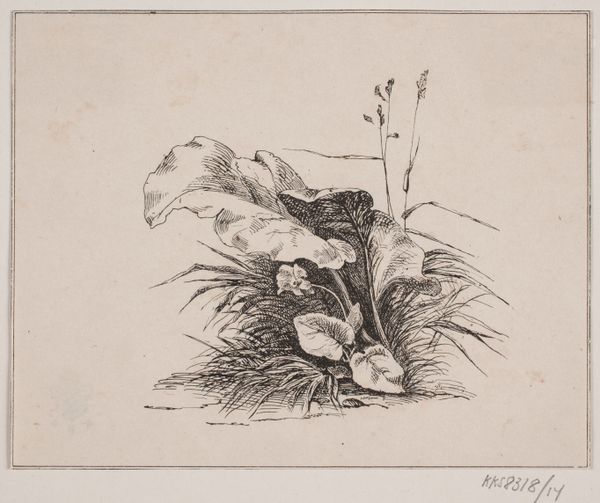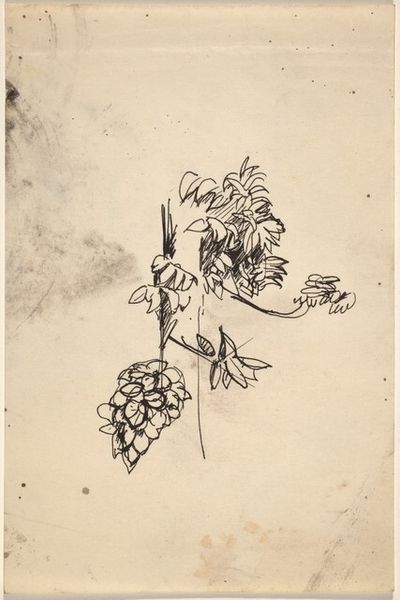
Dimensions: plate: 41 x 19 cm (16 1/8 x 7 1/2 in.) sheet: 60 x 43 cm (23 5/8 x 16 15/16 in.)
Copyright: National Gallery of Art: CC0 1.0
Editor: So, here we have "Flowers," or "Fleurs" in French, an etching made in 1894 by Ernest-Ange Duez. It’s a black and white print, simple but quite elegant, capturing these blooms in what I think is an understated and graceful manner. What strikes you when you look at this work? Curator: The whispers of memory, perhaps? That's what I hear in this floral arrangement, this chorus of monochrome blooms. Duez is using ink and the etched line, not as a draftsman would, to carefully denote, but to allow light to slip through the shadows, to make the seen *unseen*. Notice how the topmost flower is more a memory of a flower? What do you make of that stylistic choice? Editor: I hadn’t thought of it that way – almost as if time is blurring the clarity of the flower's image. The flowers almost appear like an ephemeral apparition, in that high-contrast black-and-white print. Is he commenting on mortality, perhaps? Curator: Or, darling, on the mortality of the image itself! He is saying something, indeed: the deepest truth isn't captured, it's evoked, through shadows and suggestions. I’d argue the flowers are not wilting but *receding*, and as we get closer, the more they fade. It is almost photographic! Editor: Ah, I see! So it’s about the fleeting nature of representation, not necessarily about death and decay themselves. Curator: Precisely! Perhaps he’s less a memorialist and more of a philosophical florist. Always makes you think about new perspectives on things, eh? Editor: Absolutely! I love how it turns a seemingly simple subject into a rumination on seeing itself. Thanks for shedding some light on that for me.
Comments
No comments
Be the first to comment and join the conversation on the ultimate creative platform.

